The Z1000's appearance has always elicited strong emotions—the look either inspires or disturbs you. For 2014, Kawasaki's big-bore streetfighter has become even more fringe due to what Kawasaki calls a "sugomi-inspired" design. What is sugomi? It's a Japanese word that describes the energy or aura emitted by an object of greatness, and Kawasaki says it was the philosophy that drove the Z1000's redesign.
If you think the bike looks like a predator about to pounce, then the sugomi magic is working. The bodywork is all new, and the most controversial piece is bound to be that sloping, four-lens, LED headlight. The humped tank holds an extra half a gallon of gas, while a new subframe supports a flatter seat and slimmer tail section. There’s also a new dash, tail light, belly pan, mirrors, radiator shrouds, and dozens of other small-but-significant changes that amount to a more refined bike. Say what you will about the styling, the Z’s fit and finish are impressive, easily on par with the best naked bikes from Europe.
The sugomi idea extends beyond the bodywork. The Z1000’s chassis and 1,043cc engine are reworked as well, with the intention of improving performance and handling. A freer-flowing air filter, equal-length intake trumpets, air passages between the cylinders, and a massaged intake cam help boost power. These are the same kind of alterations brought to the Ninja 1000 this year. Meanwhile, lighter six-spoke wheels, a new fork, and upgraded calipers with ABS plumbing improve handling and rectify the previous bike’s weak braking performance.
During a short press launch in downtown Los Angeles, we experienced the Z1000 in all its intended environs: stop-and-go traffic on the Sunset Strip, the open freeway, and the legendary curves of the Angeles Crest Highway. Kawasaki brought a 2013 Z1000 along, so we had the opportunity to ride the new and old models back-to-back and make a direct comparison. The first thing you notice about the new bike is an altered posture; a wider, lower handlebar puts you in a slightly more aggressive (but still comfortably upright) riding position, and the new seat and subframe are significantly narrower. Fire up the motor and you’re met with a more robust sound. The airbox has a new resonator plate and two additional openings intended to let more air and more intake howl . It works—the ‘14 Z produces a fierce snarl not present on the ‘13 machine, and it makes it all the more satisfying to twist the throttle.
Like torque? Then the Z1000 may be your bike. At red lights along Sunset Boulevard in Hollywood, I rolled to a stop in successively higher gears. Starting in sixth gear required less finesse than launching a Ninja 300 from first. Seriously. Kawasaki didn’t divulge power figures, but a dyno chart seen during the technical presentation showed the new bike’s power curves hovering above the previous machine’s output. The last Z1000 we tested cranked out 123.2 hp at 10,000 rpm and a whopping 73.6 pound-feet at 7,500, and Kawasaki says this bike makes more power everywhere.
Out on the freeway, the forward cant of the riding position helps balance the wind blast. Final drive gearing is slightly shorter for better acceleration (uh, really?), but a taller sixth gear finds the motor spinning smoothly at just 5,000 rpm at 70 mph. Again, same update as on the Ninja 1000.
Unleashing the Z1000 on a twisty road revealed the benefits of the new ergonomic layout, the new suspension, and the new brake system. Hunkering down over the tank is easier with the lower handlebar, while a new Showa fork along with revised damping and a more progressive linkage out back make the bike more planted at full lean and help reduce bump steer, which was an annoyance on the 2013 Z. The suspension on the ‘14 bike is significantly tauter than the ‘13’s, which makes it better for sport riding, but a little harsh over rough roads.
More aggressive brake pads and one-piece monoblock brake calipers fed by a radial-pump master cylinder lay waste to the ‘13’s brake system. The old setup had decent bite but lacked power and feel. This new system is tremendous, with a firm lever, strong bite, and huge power. ABS comes standard, and it works as intended without any detrimental effect on brake feel. You can blame ABS and that extra half gallon of gas for an increase in claimed curb weight, from 481 to 487 pounds.
With the addition of the tone rings necessitated by ABS, traction control is just a software update away, but Kawasaki chose not to equip the new Z1000. When asked about the absence, Kawasaki’s Senior Media Relations Coordinator Brad Puetz said that traction control was omitted due to the fact that it would mute the Z1000’s raw power, which would be against the bike’s sugomi philosophy. (Never mind that you can turn the Ninja 1000‘s TC off completely.) Kawasaki must be seriously committed to this whole sugomi thing.
There’s no doubt that Kawasaki was committed to building a better Z1000, and in that mission it’s succeeded. Plus, its $11,999 price tag is only $1,000 more than the outgoing bike’s. If the Z’s style appeals to you, you’re golden. Even if you don’t like its looks, if you’re interested in a naked bike, you owe it to yourself to give this new Z1000 a try. Its performance might just win you over.
A massaged motor, updated chassis, and intense new styling make this the most potent and polarizing Z1000 to date.
Aprilia Tuono V4R, BMW S1000R, Ducati Monster 1200, Honda CB1000R, KTM 1290 Super Duke R, Yamaha FZ1










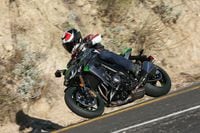

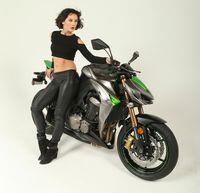

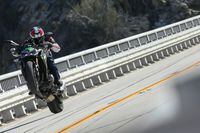
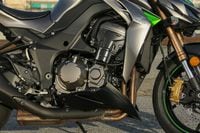




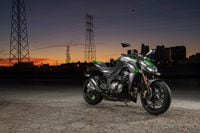

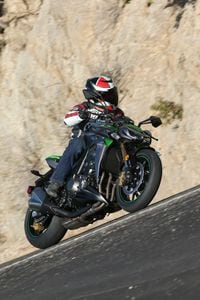
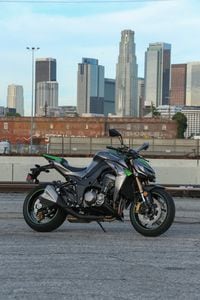
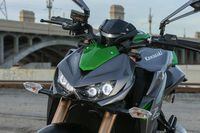





/cloudfront-us-east-1.images.arcpublishing.com/octane/2WF3SCE3NFBQXLDNJM7KMXA45E.jpg)
/cloudfront-us-east-1.images.arcpublishing.com/octane/G4MG6OUCJNBSHIS2MVVOTPX65E.jpg)
/cloudfront-us-east-1.images.arcpublishing.com/octane/IIGGWFOTOJGB7DB6DGBXCCMTDY.jpg)
/cloudfront-us-east-1.images.arcpublishing.com/octane/QSTCM6AVEZA5JJBUXNIQ3DSOF4.jpg)
/cloudfront-us-east-1.images.arcpublishing.com/octane/U4I7G625B5DMLF2DVIJDFZVV6M.jpg)
/cloudfront-us-east-1.images.arcpublishing.com/octane/B6XD6LS6IVCQPIU6HXDJSM3FHY.jpg)
/cloudfront-us-east-1.images.arcpublishing.com/octane/ICL63FEDDRDTTMINYICCEYGMDA.jpg)
/cloudfront-us-east-1.images.arcpublishing.com/octane/FCGZHQXRBZFLBAPC5SDIQLVF4I.jpg)
/cloudfront-us-east-1.images.arcpublishing.com/octane/WNOB6LDOIFFHJKPSVIWDYUGOPM.jpg)

/cloudfront-us-east-1.images.arcpublishing.com/octane/X33NU3E525ECRHXLNUJN2FTRKI.jpg)
/cloudfront-us-east-1.images.arcpublishing.com/octane/6KKT5NNL2JAVBOXMZYS5ZO76YA.jpg)
/cloudfront-us-east-1.images.arcpublishing.com/octane/J5RKG5O455GMPGQRF2OG6LRT7A.jpg)
/cloudfront-us-east-1.images.arcpublishing.com/octane/GX2CIZKQVRH2TATDM26KFG2DAE.jpg)
/cloudfront-us-east-1.images.arcpublishing.com/octane/ZWIDYSAKQZHD5BHREMQILXJCGM.jpg)
/cloudfront-us-east-1.images.arcpublishing.com/octane/CYUHJZCTSJCH3MRAQEIKXK7SCQ.jpg)
/cloudfront-us-east-1.images.arcpublishing.com/octane/LKOFINY56FCXJCANJ5M7ZDQUBY.jpg)
/cloudfront-us-east-1.images.arcpublishing.com/octane/4NBPDACMWJH63JQYJVK3QRBDZI.jpg)
/cloudfront-us-east-1.images.arcpublishing.com/octane/KKHQHRR3FJGX7H2IPU6RALMWG4.jpg)

/cloudfront-us-east-1.images.arcpublishing.com/octane/5IOFS5JAE5FOXMNA23ZRAVVYUU.jpg)
/cloudfront-us-east-1.images.arcpublishing.com/octane/CGXQ3O2VVJF7PGTYR3QICTLDLM.jpg)
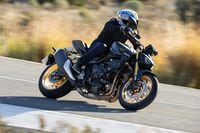
/cloudfront-us-east-1.images.arcpublishing.com/octane/OQVCJOABCFC5NBEF2KIGRCV3XA.jpg)